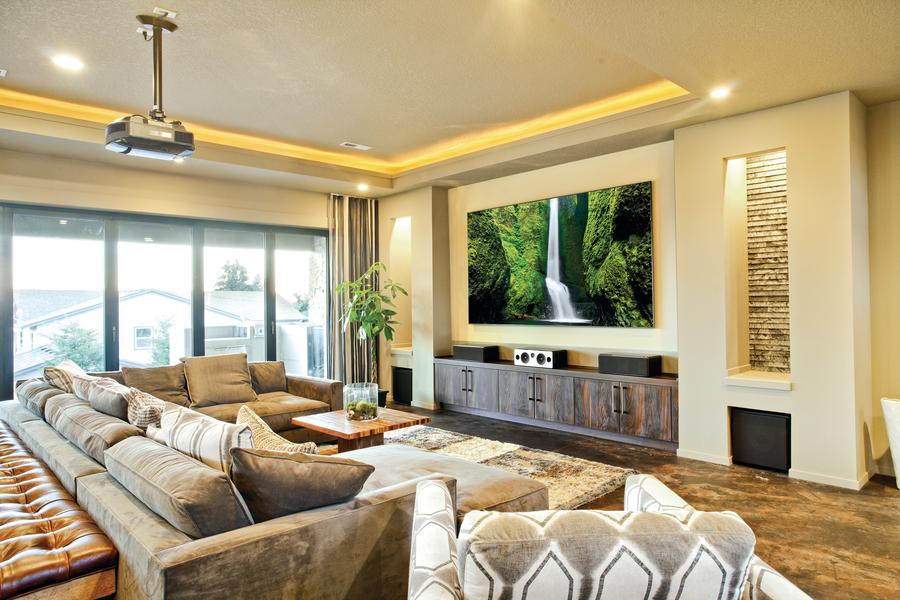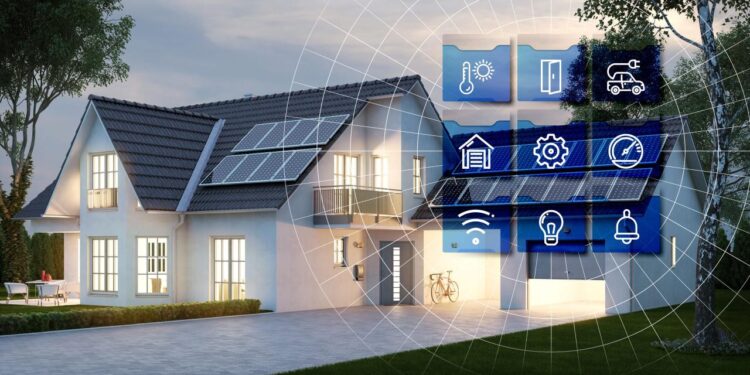The promise of a smart home is one of effortless living. It’s a vision where technology anticipates our needs, where devices communicate seamlessly, and where our living spaces adapt to us, not the other way around. Yet, for many, the reality is a frustrating tangle of incompatible apps, complex setup processes, and a collection of gadgets that fail to live up to their potential. The chasm between promise and reality is the very landscape where brilliant smart home design must emerge. This guide is for designers, developers, and product managers who are ready to build a connected future that is not just technologically advanced, but also profoundly human.
Designing for the smart home is not merely about creating a sleek-looking device or a functional app. It’s about crafting an invisible layer of technology that supports and enhances daily life without demanding constant attention. It requires a deep understanding of user behavior, a commitment to simplicity, and a holistic perspective that treats the entire home as a single, intelligent ecosystem.
Core Principles of Human-Centric Smart Home Design

Before diving into the specifics of user interfaces and hardware, it’s critical to establish a foundation of core design principles. These are the pillars upon which every successful smart home product is built.
A. User-Centricity
At its heart, any great product serves the user. In the context of the smart home, this means designing not for the sake of technology, but for the sake of solving genuine human problems. Smart devices should fade into the background, providing utility without distraction. The technology should adapt to the user’s habits and routines, offering solutions that are intuitive and personalized. For example, a smart thermostat shouldn’t just be controllable via an app; it should learn the family’s schedule and adjust temperatures automatically, only requiring manual intervention for exceptional circumstances. Successful design minimizes user effort and maximizes value, placing the user’s peace of mind above all else.
B. Simplicity and Intuitiveness
Complexity is the primary enemy of smart home adoption. A device or system that is difficult to set up, troubleshoot, or use will quickly be abandoned. Design must prioritize simplicity from the initial unboxing to daily interaction. This includes:
- Minimalist Interfaces: User interfaces, whether on a screen or a physical device, should be clean, uncluttered, and easy to navigate. Every button, menu, or control should have a clear and obvious purpose.
- Natural Interactions: The most successful smart home interactions feel natural and effortless. This could be a voice command that mimics human conversation, a gesture that triggers a light, or a sensor that automates a task without any input at all.
- Clear Feedback: Users need to know that their commands have been received and executed. Visual cues (e.g., a light changing color), audible tones, or haptic feedback provide confirmation and build trust in the system.
C. Reliability and Responsiveness
The most frustrating experience in a smart home is unreliability. A light that fails to turn on, a security camera that lags, or a voice assistant that doesn’t hear a command erodes user trust and makes the technology feel like a burden. Design must account for network latency, power outages, and potential hardware failures.
- Fail-Safe Mechanisms: Every smart device should have a manual or physical override. If the Wi-Fi is down or the app is unavailable, the user must still be able to control the device directly.
- Consistent Performance: Smart home products must be responsive. A delay of even a few seconds between a command and its execution can feel like a lifetime and can make the system feel sluggish and unreliable.
D. Security and Privacy
In a connected world, security is paramount. Smart home devices collect an incredible amount of personal data, from schedules and location to voice recordings and video feeds. It is the designer’s ethical and moral responsibility to protect this information.
- Security by Design: Security should not be an afterthought. It must be a foundational part of the product’s architecture, from encrypted data transmission to secure user authentication.
- Transparency and Control: Users must be informed about what data is being collected, why it’s being collected, and how it’s being used. Furthermore, they must have the ability to easily review and delete their data, and to opt-out of data collection whenever possible.
E. Interoperability
A fragmented ecosystem is the primary roadblock to a truly “smart” home. When devices from different brands can’t communicate, the user is left to juggle a multitude of separate apps and interfaces. Design must embrace open standards and protocols that enable devices to work together seamlessly.
- Open Standards: Protocols like Matter, Zigbee, and Thread are designed to break down silos and allow devices to communicate regardless of the manufacturer. Designing products that support these standards is crucial for building a cohesive smart home.
- Ecosystem Integration: The best smart devices are those that are designed to play well with others, offering integrations with major platforms like Amazon Alexa, Google Assistant, and Apple HomeKit.
F. Scalability and Flexibility
A smart home is rarely built all at once. It’s an evolving system that grows with the user. The design must accommodate this growth.
- Seamless Expansion: The system should allow users to add new devices easily without complex re-configuration.
- Customization: Users should be able to personalize their smart home. This includes creating custom routines, automations, and dashboards that reflect their unique needs and preferences.
Designing the Smart Home Experience

Once the core principles are understood, designers can begin to apply them to the various facets of the smart home experience.
The User Interface (UI) and Interaction Modalities
The user interface is the bridge between the human and the machine. In the smart home, this is not a single interface but a collection of interaction modalities that must work together harmoniously.
1. Mobile Apps
The mobile app is often the central hub for setup, management, and detailed control.
- Onboarding: The initial setup experience must be incredibly simple. Clear, step-by-step instructions with visual aids can make or break the user’s first impression.
- Dashboard Design: The main dashboard should provide an at-a-glance overview of the most critical devices and their status. It should be customizable, allowing users to prioritize the devices they use most often.
- Notification Strategy: Notifications should be used sparingly and only for truly important information, such as a security alert. Excessive or irrelevant notifications lead to “notification fatigue,” where users simply disable them, missing critical alerts.
2. Voice Interfaces
Voice assistants like Alexa and Google Assistant have become a cornerstone of smart home interaction.
- Natural Language Processing (NLP): Voice commands should feel natural and not require users to memorize specific phrases or syntax.
- Confirmation and Feedback: The system should audibly confirm that a command has been understood and executed. When a command is not understood, the system should offer a clear, polite explanation and, if possible, suggest a alternative.
- Context-Awareness: A voice assistant should understand the context of a request. For example, the command “turn off the lights” should, by default, apply to the room the user is in.
3. Physical and Ambient Interfaces
Not every interaction needs a screen or a voice command.
- Tactile Controls: Physical buttons, dials, and switches are often faster and more intuitive for simple, repetitive tasks (e.g., dimming a light). They also provide an essential fail-safe.
- Sensors and Automation: The most seamless experiences are often the most invisible. Context-aware design uses sensors (motion, light, temperature, presence) to trigger automations automatically, without any user input. The lights turn on when you enter a room; the thermostat adjusts based on who is home. The technology works in the background, making life simpler without ever being explicitly interacted with.
The Physical Product Itself
The hardware is the physical embodiment of the smart home. Its design is just as important as the software.
- Aesthetics and Form Factor: Smart devices should blend into the home environment. They should be discreet, stylish, and built with high-quality materials that feel good to the touch. The device’s form factor should make it easy to place and use.
- Communication through Design: The product should communicate its function without a manual. The placement of buttons, the color of an LED light, or the texture of a surface can all convey information to the user.
- Installation and Maintenance: The unboxing and installation process should be a pleasant experience, not a technical challenge. Packaging should be minimal and eco-friendly, and instructions should be clear and simple.
The Future of Smart Home Design
The next evolution of the smart home is about moving from a collection of connected devices to a truly intelligent, ambient system. The term ambient computing describes a future where technology is deeply integrated into our environment, becoming an invisible and proactive assistant.
- Predictive AI: Future smart homes will use artificial intelligence to predict user needs before they are even expressed. The home will learn patterns and anticipate actions, pre-heating the oven when a user starts a specific recipe or suggesting a calming playlist when it detects a stressful day.
- Personalization at Scale: The smart home will adapt on a micro-level, personalizing experiences for each individual. The lighting, temperature, and even the content displayed on a smart screen will change based on who is in the room.
- Holistic Wellness: Smart homes will move beyond convenience and security to become proactive partners in health and wellness. They will monitor air quality, sleep patterns, and stress levels, offering personalized recommendations to improve physical and mental health.
This future requires a fundamental shift in design thinking. Designers must move from creating “smart products” to crafting a “smart experience.” The focus will be on the flow of the user’s day, not the features of a single device. The goal is to build a home that is not just connected, but truly supportive and empathetic.
Conclusion
The journey to a truly smart home is paved with thoughtful design. The difference between a collection of gadgets and a cohesive, intelligent living space lies in the designer’s ability to prioritize the human experience. It starts with a foundational commitment to user-centricity, simplicity, and reliability. It extends to the careful crafting of every interaction, whether it be through a mobile app, a voice command, or an ambient sensor. And it culminates in the creation of a system that is not just functional, but genuinely enhances the quality of life.
The principles of good design—understanding the user, providing clear feedback, and ensuring a seamless, integrated experience—are not new. What is new is their application to the unique complexities of the connected home. The challenges are significant, from navigating a fragmented ecosystem to safeguarding sensitive personal data. Yet, the opportunity is immense: to build a future where technology is no longer a source of friction, but a supportive, invisible layer that enables us to live more comfortably, securely, and peacefully. The ultimate goal is to design a smart home that you don’t even have to think about, because it’s already thought of everything for you. By focusing on the human, and not just the tech, we can turn the promise of the smart home into a beautiful, seamless reality for everyone.



